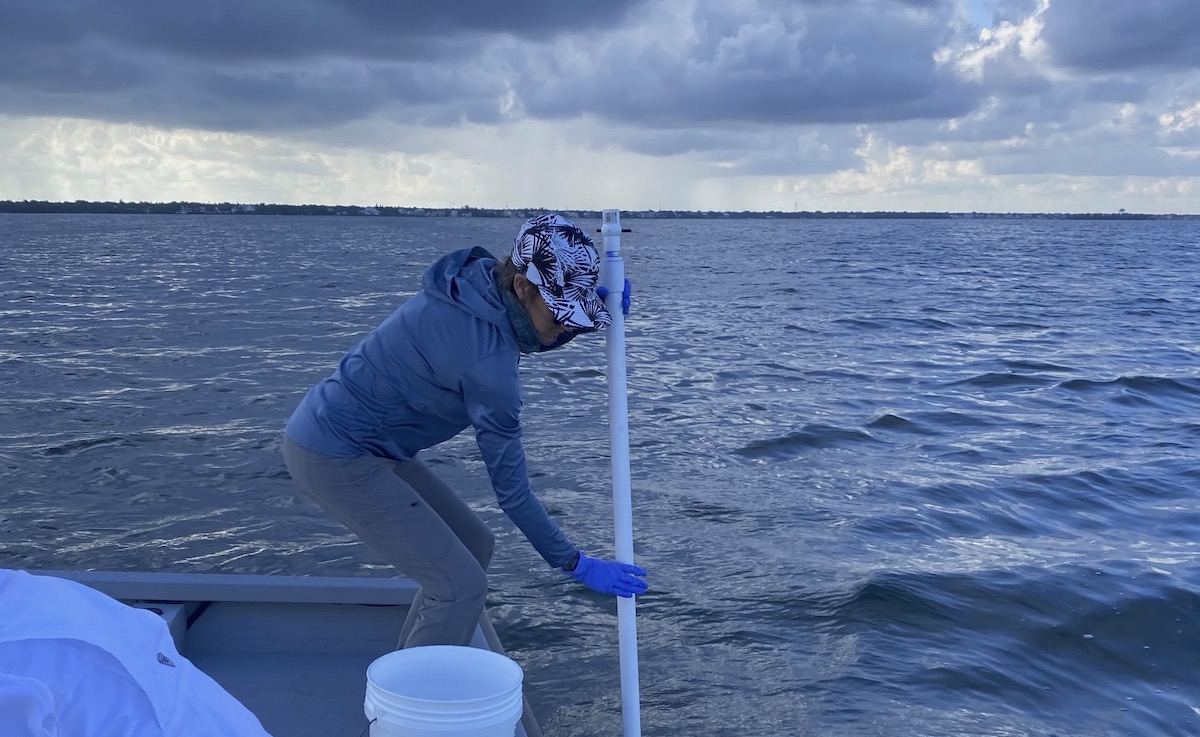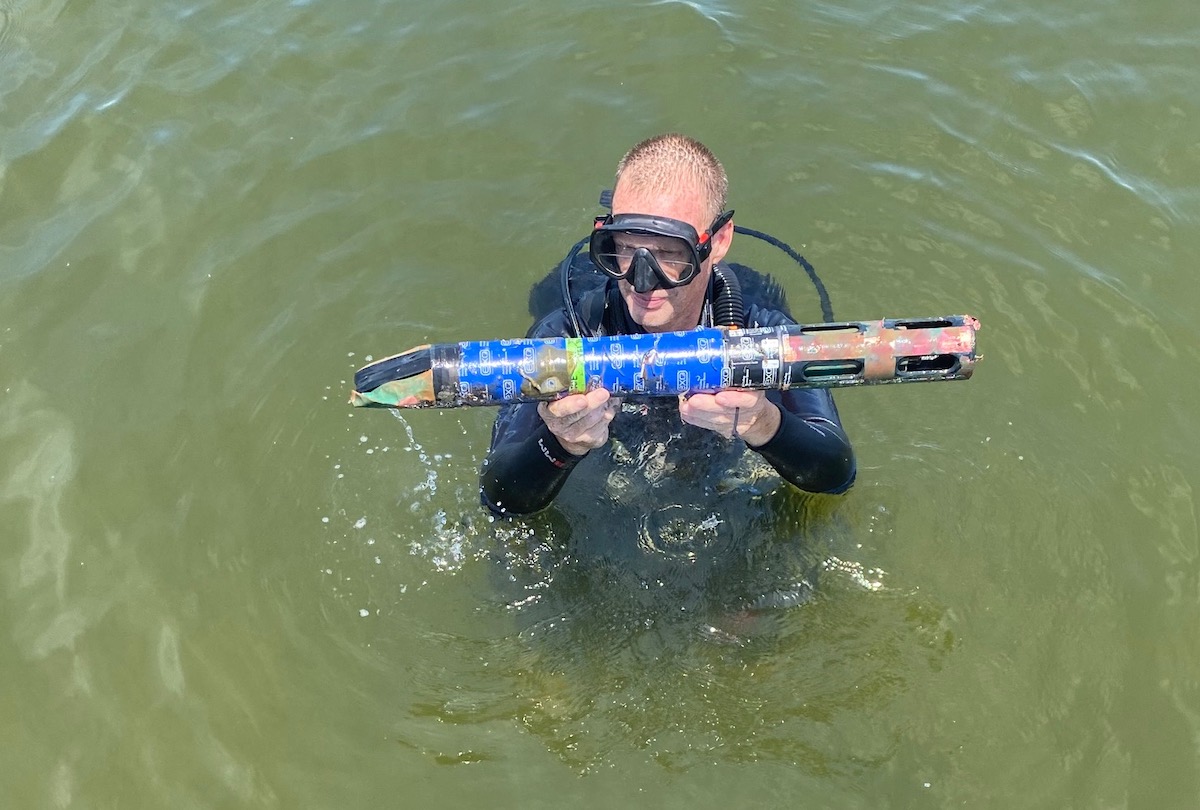The Troubling Impacts of Florida’s Piney Point Pollution
Florida’s water quality woes point to many smoking guns

Tampa Bay was in the national spotlight in April when the state government intentionally released 210 million gallons of nutrient-rich water from the Piney Point gypsum stack into the bay. This decision was based on the belief that to prevent a catastrophic breach of the stack, the water behind it needed to be quickly bled off. Unfortunately, this meant endangering the fragile Tampa Bay estuary and putting at risk the bay’s decades-long recovery from the ecological brink. Residents and businesses were rightly outraged. Piney Point threatened their beloved bay, way of life and estuary-dependent livelihoods.
Scientists sprang into action to study Piney Point’s impacts. The University of Florida’s (UF) Center for Coastal Solutions, with funding from Ocean Conservancy, is one of a dozen entities, including the Tampa Bay Estuary Program, studying ecosystem changes linked to the release. I recently joined the Center’s Drs. Elise Morrison and Andrew Altieri to see their research firsthand.
Impacts on algae and seagrass beds
Dr. Morrison, Dr. Altieri and Dr. Edward Phlips are tracing the pulse of nutrients from the gypsum stack through the ecosystem to see how algae and seagrass beds respond. This is significant because algae and seagrasses are at the base of the food web. Too many nutrients can turbocharge algal growth, which clouds the water and smothers the bottom, preventing sunlight from reaching and sustaining seagrasses. Numerous species including manatees, fish, turtles and birds depend on seagrasses for food or protection from predators, and declines in seagrass abundance have ripple effects. On the Atlantic Coast, for example, manatees are starving to death in record numbers due to loss of seagrass critical to their diet. The recent uptick in deaths in Tampa Bay, possibly red tide-related, is worrying.

Low to very low counts of Karenia brevis, the microscopic organism that causes red tide, were reported in Lower Tampa Bay starting at the end of April and into much of May. However, this organism proliferated into a large and severe bloom within the bay during June and July 2021, resulting in fish kills in the region. Its recent intensification is likely due in part to drought-induced high salinities in bay waters, ideal conditions for Karenia, and nutrient pollution from other land-based sources. Additionally, in late May, thick mats of the cyanobacteria Lyngbya were also seen within upper Sarasota Bay. To evaluate whether and to what extent the Piney Point nutrient-rich releases have impacted the bay, Morrison and Phlips are looking at changes in nutrients and phytoplankton communities in the region, while Altieri is examining seagrass and seaweeds.
Piney Point threatens the huge gains in seagrass cover that had been achieved in Tampa Bay in recent decades. Tampa Bay is the one estuary in Florida where one could point to a clear example of investments in water-quality improvement resulting in significant improvements in estuary health.
Ongoing water quality problems
Whether it’s Tampa Bay, Biscayne Bay or Indian River Lagoon, Florida’s bays, estuaries and lagoons face ongoing water-quality problems and the economic consequences that result. Harmful algal blooms and their ecological, economic and human health impacts, including fish kills, canceled vacations and illness, will persist until the flow of nutrients, especially nitrogen and phosphorous, from inland and coastal watersheds into local waterways is meaningfully curtailed.
To his credit, Governor Desantis has made water quality and harmful algal blooms a priority since his first days in office, and the state legislature has passed some rules to improve water quality. The incremental progress, however, is simply not keeping pace with the severity of the crisis. A growing population and associated expansion of roads, septic tanks lawns, and golf courses coupled with agricultural runoff and legacy nutrients in Lake Okeechobee are overwhelming Florida’s aquatic ecosystems. The climate crisis is making matters worse by warming waters that fuel longer-lasting and more frequent and potent harmful algal blooms.
Removal and reclamation of gypsum stacks
Piney Point and other gypsum stacks around the state are priorities for removal and reclamation so that future intentional water releases or catastrophic failure can be avoided. However, the drip, drip, drip of nutrient pollution from numerous chronic, non-point source pollution sources, along with other stressors, collectively poses an existential threat to Florida’s estuarine and marine waters and the communities that depend on them. A comprehensive approach is needed to identify sustainable solutions that can benefit the intertwined wellbeing of Florida’s human population and coastal ecosystems.

A major concern for ecosystems is a tipping point, which occurs when ecological conditions shift abruptly and possibly irreversibly from one state to another. Tipping points turn ecosystems on their heads. Some species disappear, while others, usually less-desirable ones, move in and dominate. For example, if harmful algal blooms and the nutrients fueling them are not controlled, seagrass beds in some estuaries could be permanently replaced by macroalgae. All the benefits of seagrasses, including essential fish habitat and the fisheries they support, would be lost. Unfortunately, no amount of seagrass planting will save a system if the underlying stressors (pollution) remain unresolved. The Indian River Lagoon is a system that has flirted with tipping points and might be doing so again now.
Working together to improve water quality
Morrison, Altieri and Phlips hope to make some preliminary findings later this year on Piney Point’s role in the bay’s red tide event and on the resilience of seagrasses exposed to phytoplankton blooms in Tampa Bay. In the meantime, Floridians must continue to advocate for nutrient pollution curbs and improved water quality by urging their elected officials to make these issues top legislative priorities in 2022. Up-to-date information on conditions in the bay can be found through the FWC’s red tide map and Tampa Bay Estuary Program’s data portal, and details about UF’s efforts to safeguard Florida coasts can be found at the Center for Coastal Solution ’s website.